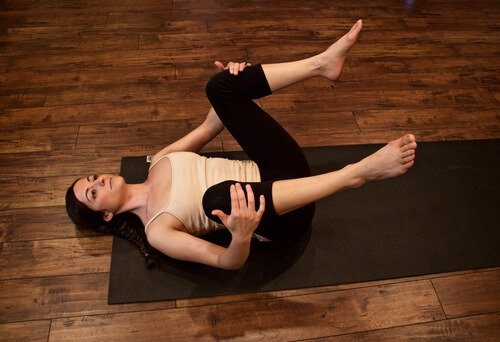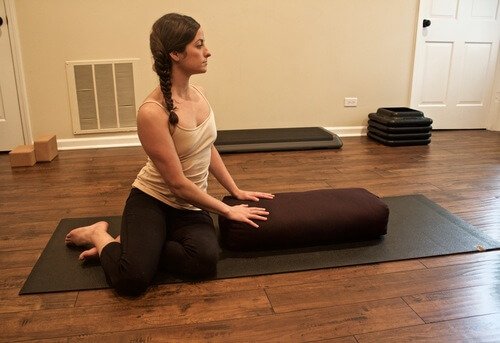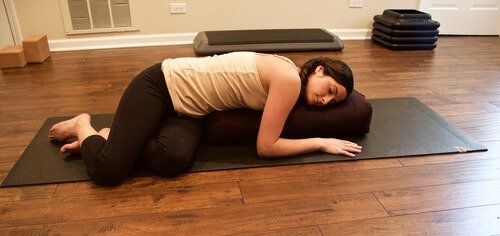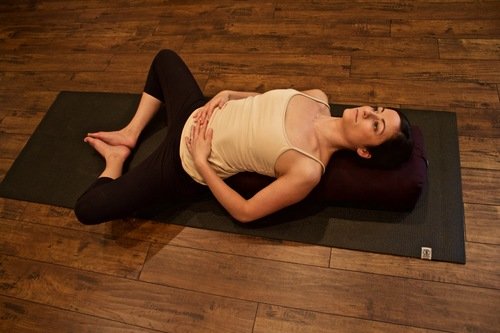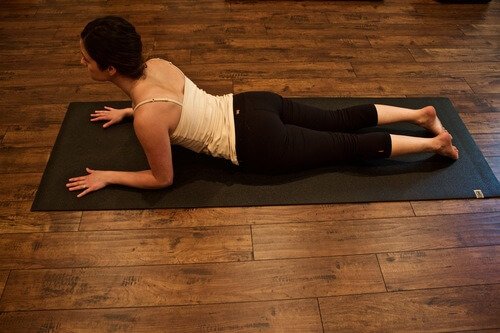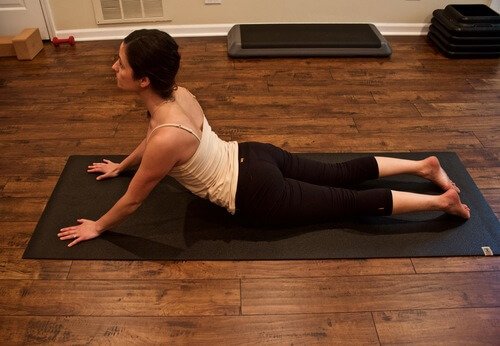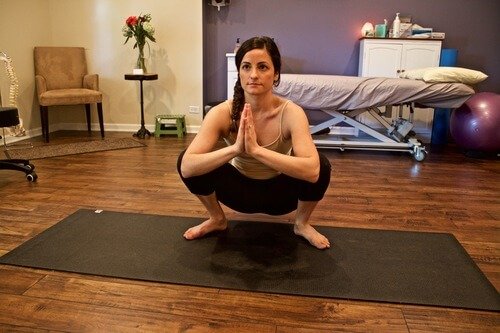6 ESSENTIAL STRETCHES TO EASE PELVIC FLOOR TENSION
Persistent pelvic pain can be a pain in the ass, literally. No fun!
Some examples of pelvic discomfort include:
• pain with sitting
• deep pain in the butt
• painful sex
• pain during or after peeing or pooping
• pain with inserting a tampon or with gynae exams
• pain sitting on a bike
• penis pain
• pain with orgasm
• pain with ejaculation
• abdominal pain
• bladder pain
• testicle or scrotal pain
• labia pain
So why would someone be experiencing pelvic pain in the first place? I wish I could give you a straightforward answer, but it's not that simple.
Pelvic pain can be caused by a lot of things, such as:
• overactive pelvic floor muscles
• tight pelvic floor muscles
• stress
• frequent infections
• sexual trauma
• emotional trauma
• urogynecological diseases such as endometriosis, fibroids, or prostatitis
• pregnancy/delivery
• scars
• falls on the tailbone
• hormone imbalance
• diet
Pelvic pain is a multi-factorial experience; a combination of things that trigger symptoms so it's really important to explore and brainstorm the potential root cause(s) of your symptoms with a pelvic health specialist.
If you're experiencing any of the symptoms listed above, I'd highly recommend consulting with your local pelvic floor specialist because we can help!
In the meantime, here are my top 6 favorite pelvic floor stretches that I share with all my clients. They're easy, simple, and most importantly relaxing.
I recommend that you do these stretches after a hot shower or bath. Do them somewhere where you can really focus and pay attention to your body and your breathing while stretching. You'll want to recognize if you're tightening your pelvic floor so you can learn to let go.
All of the stretches below are buddied up with diaphragmatic breathing otherwise known as deep belly breathing. You start by inhaling through the nose, filling your belly with air, followed by slowly exhaling, either through your nose or mouth, passively letting the air come out. With each in breath the belly should rise and with each out breath it should fall. Try to keep you head, neck and shoulders relaxed as much as possible. Breathing shouldn’t feel forced. It might feel challenging or tight around the rib cage at first, but this will eventually get better with practice.
So let’s get started!
1. Supine Pelvic Floor Stretch
This stretch is a great hip and pelvic floor lengthener. Start by pulling both knees toward your chest. Then take your knees out to the side to add in an inner groin stretch. As you’re breathing, focus on letting go of your pelvic floor and buttock muscles. Take 5-10 deep breaths in this posture.
2. Supported Spinal Twist
Start by sitting side ways with knees bent allowing your right shin to rest in the arch of the left foot. With your left hip snug up against the bolster, lift your breast bone sitting up tall and gently twist to the left so that you’re facing the bolster. Slowly lower yourself down so that your left cheek is comfortably resting on the bolster. If you want to increase the intensity of this stretch, turn your head to the left so that the right cheek is resting on the bolster. Only do this if your neck feels comfortable in the twist. Take 5-10 deep belly breaths. Repeat on the other side.
3. Supported Groin and Pelvic Floor Stretch with Slight Back Bend
Start by sitting with your back facing the bolster. Slowly lower yourself down to rest your back on top of the bolster. Bring your feet together so the soles of your feet touch, allowing your knees to open out to the side. If this posture is not comfortable for your back, feel free to try the same pose but without the bolster. If you feel like your legs are straining and inner thighs are too tight, use pillows for support underneath your knees. This posture should feel comfortable. I love this restorative posture because it opens the pelvic floor and the feedback you get from your hands on your belly really deepens the awareness of the belly breathing. Take 15-20 deep breaths here.
4. Cobra
This position stretches your abdomen, front of the hips and pelvis. Slide your elbows to your side and roll your shoulders back and away from your ears. No ear hugging with your shoulders! Keep your buttocks and legs relaxed throughout the entire stretch. Take a deep breath in as you prop yourself up onto your forearms. From here take 5 deep belly breaths. If this doesn’t feel like much of stretch, challenge yourself by straightening out your elbows all the way up (as shown in the second picture). Again, keep your body as relaxed as possible as you hold the posture for an entire breath in and out. Slowly lower yourself back down to your forearms and repeat 5 times. If this is the stretch for you, go wild and do more!
5. Hip and Lower Back Twist
Stretching your hips and low back helps to reduce tension in your pelvic floor. They’re neighbors so they like to talk to each other. Start by lying on your back. Pull one knee to your chest and gently pull the leg across your body with the opposite hand placed on the outside of the knee. Then extend the other arm out to the side at shoulder level height. To increase the intensity of this stretch, turn your head to look at your extended arm. Breath deeply for 5-10 breaths. Repeat on the other side.
6. “Ass to Grass” Pelvic Floor Deep Squat
Ok, I know there’s no grass in this picture but you get the gist. This is another great hip and pelvic floor lengthener. Start by standing with your feet wide apart and toes pointed out to the side. Slowly stick your butt out and lower yourself towards the floor. If balance is an issue, feel free to use your back up against a wall to lean on for added support. If your hips or knees just don’t feel comfortable in this position, try adjusting the width of your knees and feet. I love props so play around with using a yoga block or pillow under your sit bones. If you find your heels aren’t touching the floor, use a rolled up yoga mat or half foam roller under your heels. Finding that sweet spot will vary from person to person. Keep your feet flat and your heels down. You shouldn’t feel like you’re holding yourself up. Take 5-10 deep breaths. Stand up and repeat 3 more times.
As with any new exercise or stretching program, don’t be macho. Always, always listen to your body. Increasing your flexibility takes time and patience. Remember to breath, relax, and let go.
This information is not intended to substitute for professional medical advice, diagnosis, or treatment. Always seek the advice of a healthcare professional with any questions you may have regarding treatment, medications/supplements, or any medical diagnoses. This information is intended for educational purposes only and is in no way to substitute the advice of a licensed healthcare professional.

